Best Ndebele food recipes you ought to try: Top 10 list with images
One of the biggest indicators of the culture of people around the world is what they mostly eat, and for different tribes across the African continent, this is a big deal. For example, the Ndebele people are renowned for their food. The most common Ndebele food is made from corn and can be eaten with various sides.
New feature: Check out news exactly for YOU ➡️ find “Recommended for you” block and enjoy!
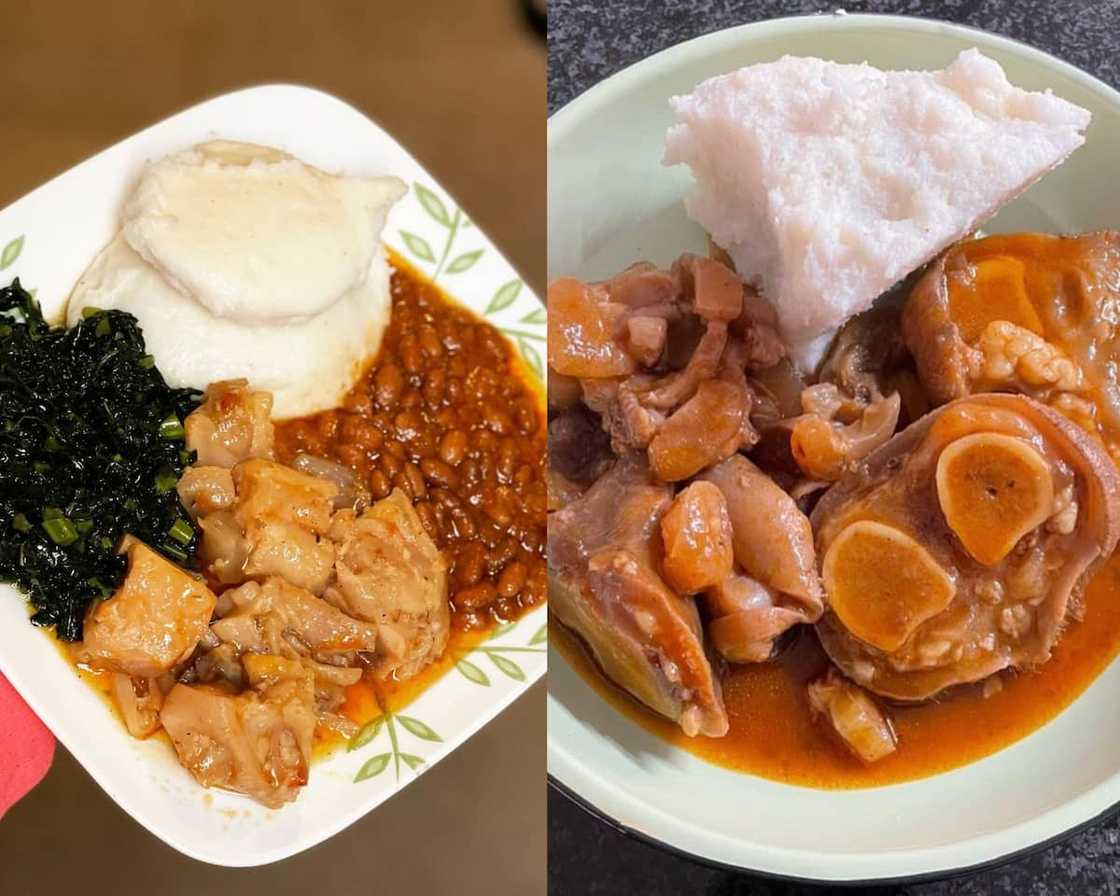
Source: UGC
The Ndebele people reportedly avoid eating animals that eat other animals. They also avoid meat from horses, donkeys, and any animal living in the water. However, despite this seeming containment of their food options, the people have developed various delicacies that will leave a visitor in awe.
What does the Ndebele culture eat?
The most common traditional Ndebele food is the Itshwala or Sadza known as the maize meal in English. Below is a list of ten of their most popular foods and how to prepare them.
1. Itshwala
PAY ATTENTION: Follow Briefly News on Twitter and never miss the hottest topics! Find us at @brieflyza!
Also known as Sadza, this meal is made from maize, arguably the most common Ndebele cultural food. It is mostly served alongside various delicacies of steamy stews made with beef, pork, chicken, and sometimes collard greens.
Ingredients
- Hot water
- Cold water
- Mealie meal
How to prepare
- Add the mealie-meal into a cooking pot and blend with enough cold water until it turns to paste;
- Place the pot on a cooking stove and add some boiling water while stirring continuously to prevent lumps from forming;
- Keep stirring till the whole mixture begin to boil;
- Close the pot and leave it on the stove at moderate heat for about 15 minutes (the amount of time, however, depends on whether you are using the super refined mealie-meal or the unrefined type;
- Add some more mealie-meal but at intervals, while stirring to prevent lumps from forming;
- If you notice that your preferred texture has been achieved, then it is time to let it cook for about five minutes;
- You can serve your Itshwala with whatever sides you have chosen.
2. Pumpkin pudding
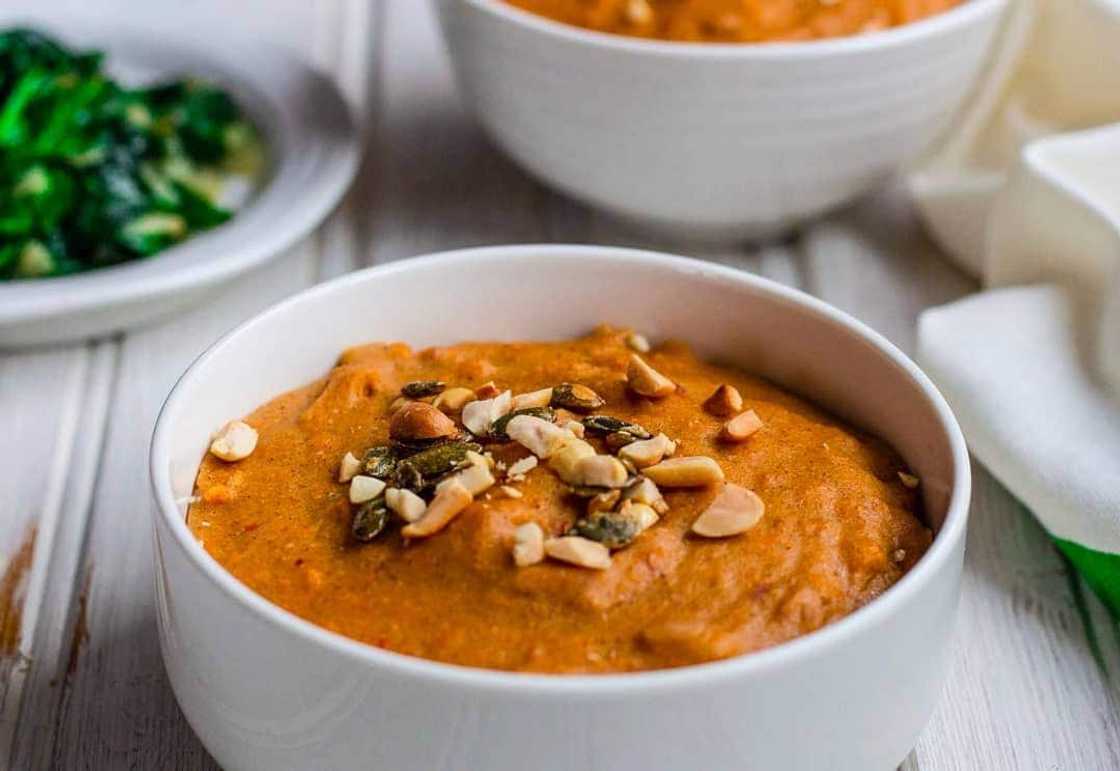
Source: Instagram
This meal is referred to as Nhopi in the Ndebele dialect. It is traditionally made from mealie meals, pumpkins, peanut butter, and shamba, also known as water squash.
Ingredients
- Ginger
- Cinnamon
- Sugar
- Mealie meal
- Pumpkin
- Peanut butter and
- Water squash
How to prepare
- Cook the pumpkin or squash until it is soft;
- Add the sugar, peanut butter, cinnamon, ginger and salt into the cooking squash;
- Close the cooking pot and allow to simmer for about three minutes which is enough time for the peanut butter to be cooked;
- Make the pumpkin into a pulp by beating it;
- Let the mixture boil for another five minutes before taking it off the stove.
3. Cow heels

Source: Instagram
This is traditionally referred to as Mazondo and is one of the most popular Ndebele cultural foods. It takes patience to prepare this meal because it must cook for several hours since it is made from cow heels.
Ingredient
- Cow heels
- Water
- Salt
- Chopped onions
- Tomato paste
- Chopped tomatoes
- Curry powder
How to prepare
- Clean your cow heels and put them in a pot, after which you add water and enough salt;
- Leave it to boil for some time before reducing the heat;
- At this moderately reduced heat, continue cooking the cow heels for about three hours or at least until when you are sure that it is soft;
- Remove the water but leave a bit of it inside;
- Add some spices, including curry, salt, onions, tomato paste and fresh tomato, to give it a taste before adding enough water to keep boiling;
- The meal is not supposed to be runny, and as such, you can make flour into a paste and add it to thicken the texture;
- Let the mixture boil for another five minutes before serving.
4. Mopane worms
This meal is prepared by cooking edible caterpillars, locally referred to as Madora, that feed on the leaves of the Mopane trees. It can be eaten fried, boiled, or dried.
Ingredients
- Mopane worms
- Curry
- Oil
- Salt
- Ground black pepper
- Fresh tomatoes
- Onions
- Garlic
- Ginger
- Shallots
How to prepare
- Leave the Mopane worms in boiling water for about 10 minutes,
- and ensure that you rinse thoroughly before draining water;
- Put the frying pan on a cooking stove and add enough oil before introducing your ginger and garlic while stirring;
- Introduce the Mopane worms and stir at intervals for about 10 minutes;
- Add the onions and curry powder while stirring continuously for about 10 minutes or at least until the onions are cooked;
- Introduce your chopped tomatoes and stir before leaving to cook for two minutes;
- Introduce the shallots and stir continuously until you obtain an even blend;
- Leave on the stove for about one minute before serving with your preferred side, which could be plain Sadza.
5. Sour milk
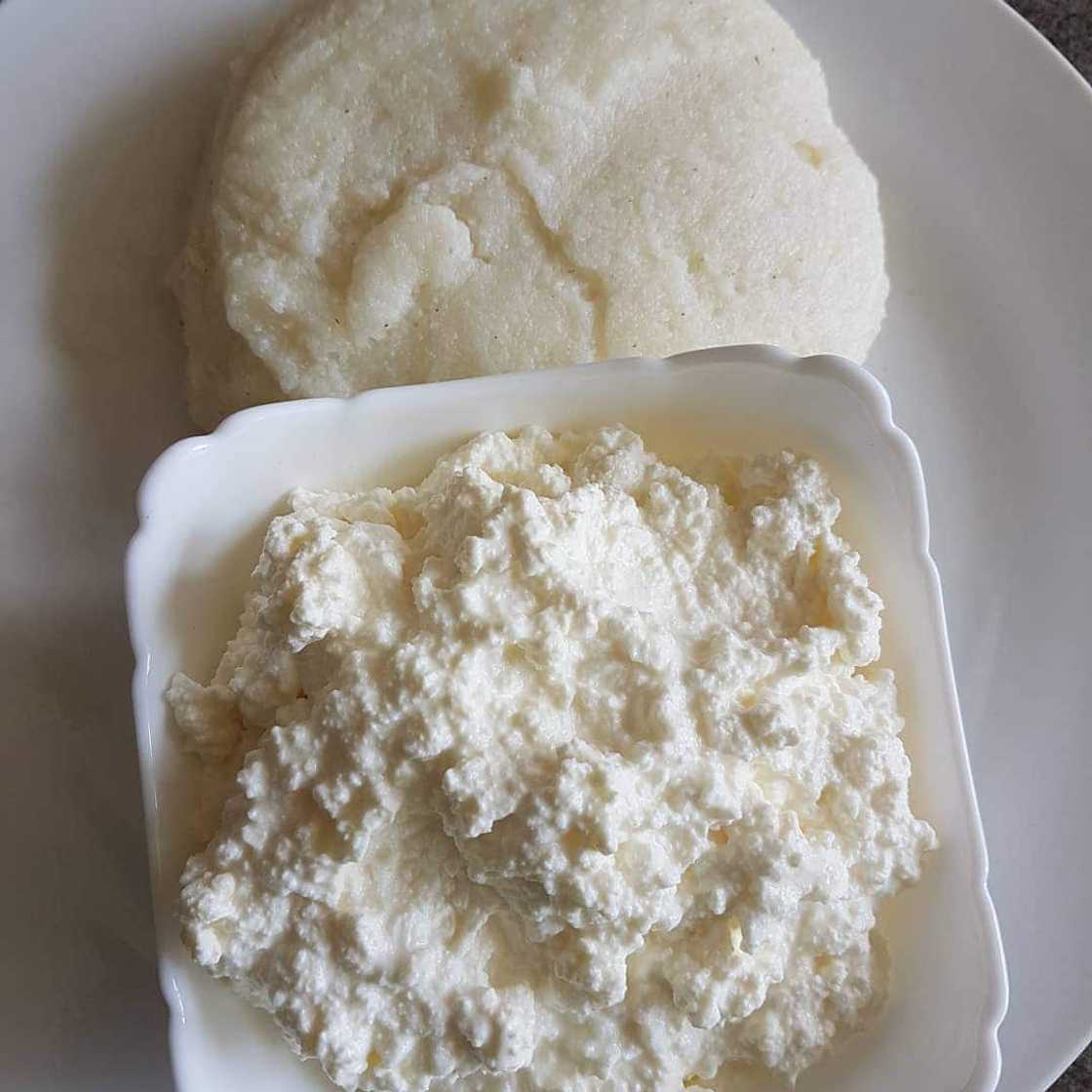
Source: Getty Images
This meal originates in prehistoric Zimbabwe, where the Khoisan folks eat sour milk with sorghum and honey. It is traditionally referred to as Hodzeko, a name derived from the clay pot in which the milk is fermented.
The production of this dish has now been modernized and can be found in supermarkets. It goes well with a side of Sadza at lunch or eaten with sugar as a dessert. It has major health benefits as it is a ready source of protein.
6. Cocoyam dish
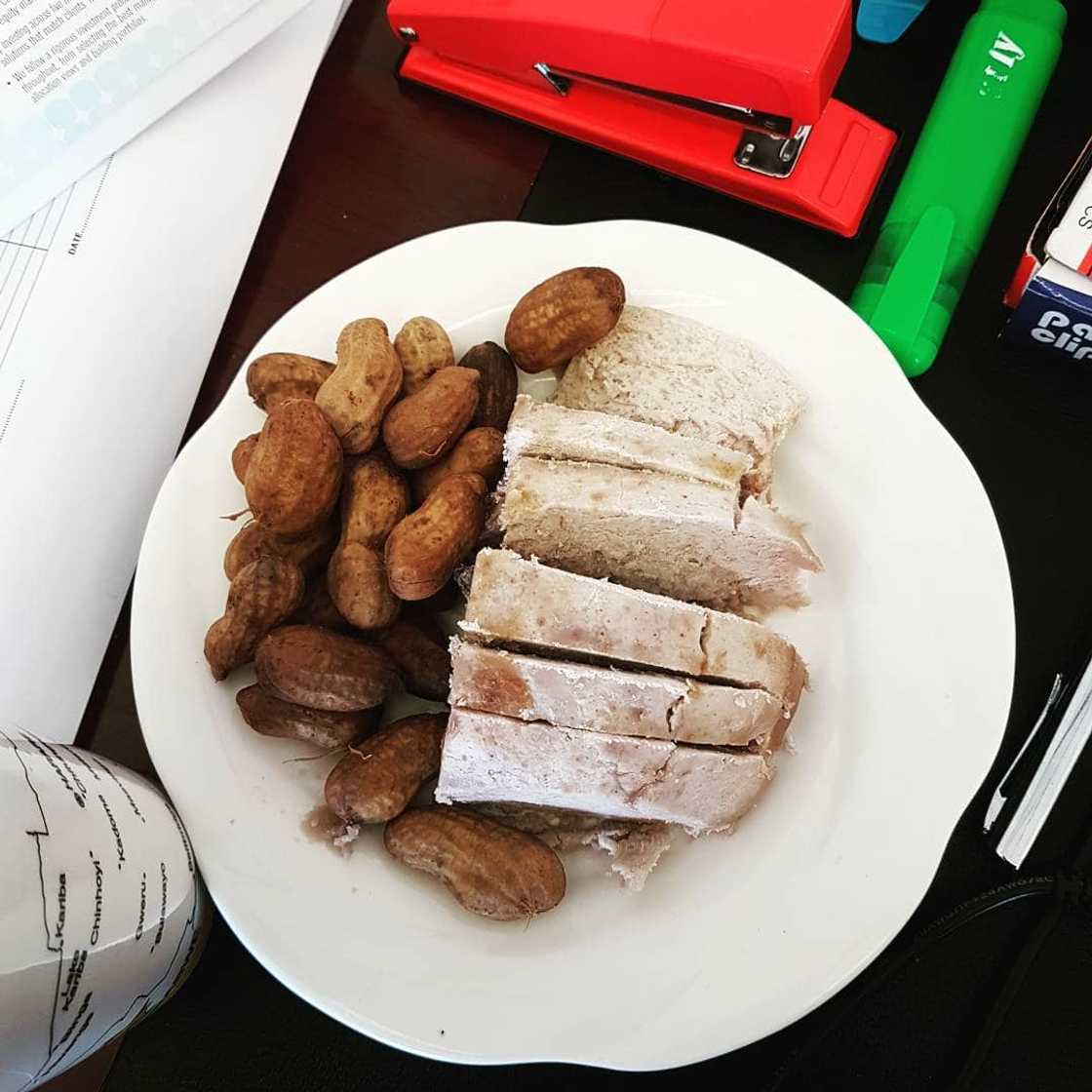
Source: Instagram
The meal is made from cocoyam, locally referred to as Madhumbe. It is a versatile food that can be eaten in different ways, whether fried or boiled.
Ingredients
- Salt
- Cocoyam
- Water
- Oil, butter, or margarine
How to prepare
- Wash the cocoyam in a bowl of portable water before transferring it into a clean pot;
- Add enough water to make it boil;
- Allow it to boil until soft enough to be picked by a prong or fork;
- Leave to cool before peeling and slicing in circles;
- Add a sprinkle of salt to give a taste;
- Add oil into the pot and heat with either margarine or butter;
- Add the sliced cocoyam into the frying oil and leave it there until a golden brown colour is obtainable;
- Taste the seasoning to see if any adjustment is necessary.
7. Offals
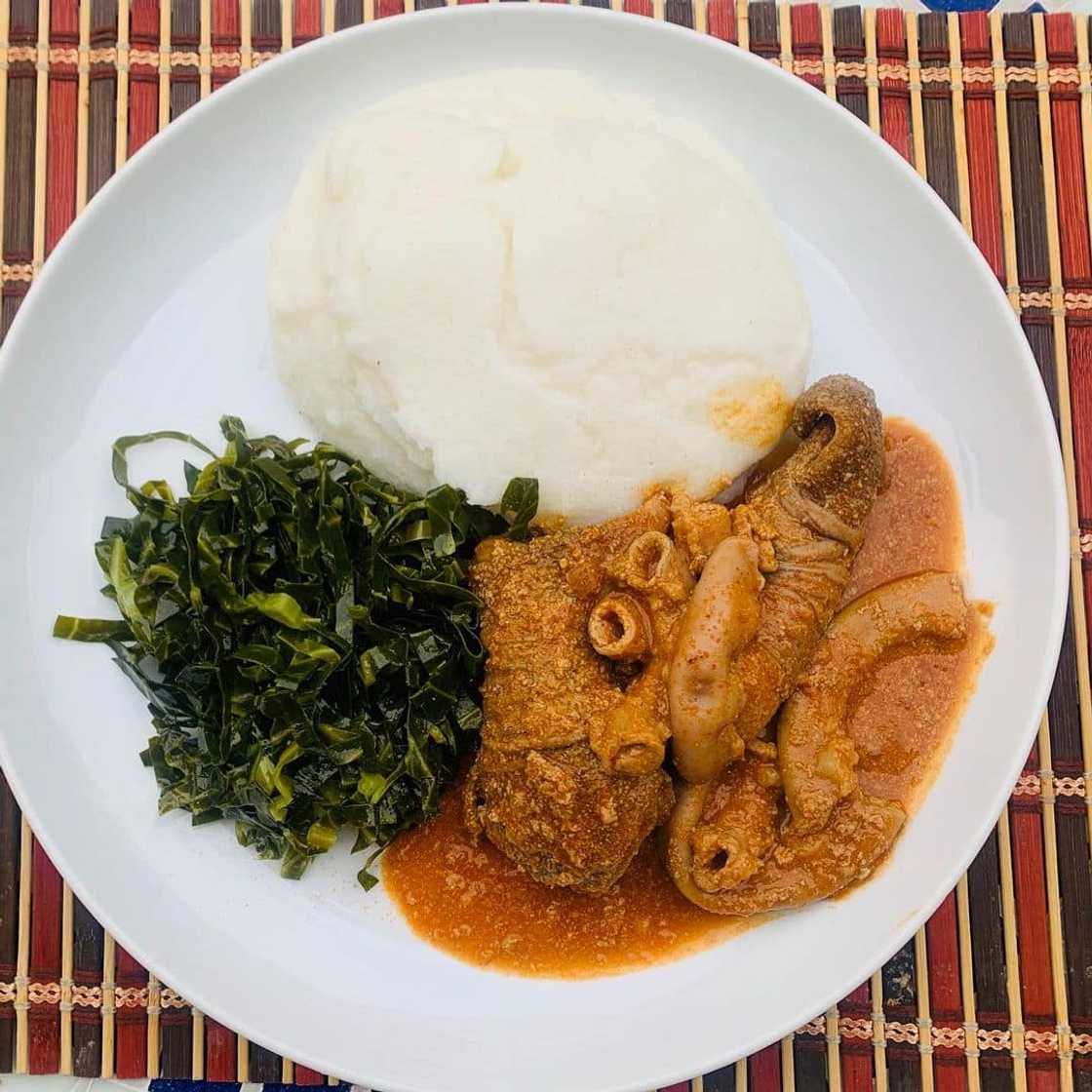
Source: Instagram
Also known as Matumbu, this delicacy is one of the tastiest that a visitor can eat in Ndebele. You can make it into Gango when barbecued or Zvinyenze when you wrap some intestines around the tripes.
Ingredients
- Offals
- Chopped fresh tomatoes
- Water
- Curry powder
- Tomato paste
- Salt
- Chopped onions
- Chopped garlic
- Oil
How to prepare
- Wash the inside and outside of the offals using clean water until you are sure that no dirt is left on them;
- Heat the oil after pouring it into a frying pan;
- Introduce the Matumbu, salt, and garlic before leaving to fry until a golden brown colour is noticeable;
- Add sufficient water to boil the mixture and then reduce to moderate heat while allowing the offals to soften;
- Introduce your chopped onions and curry powder before leaving to cook for another three minutes;
- Add the tomato paste and chopped fresh tomatoes before leaving to cook for five minutes tops;
- Add a bit of water to cook the mixture at low temperature for another five minutes;
- Check the taste to see if adjustments need to be made with the seasonings;
- Serve with whatever you like.
8. Sundried maize and yellow watermelon
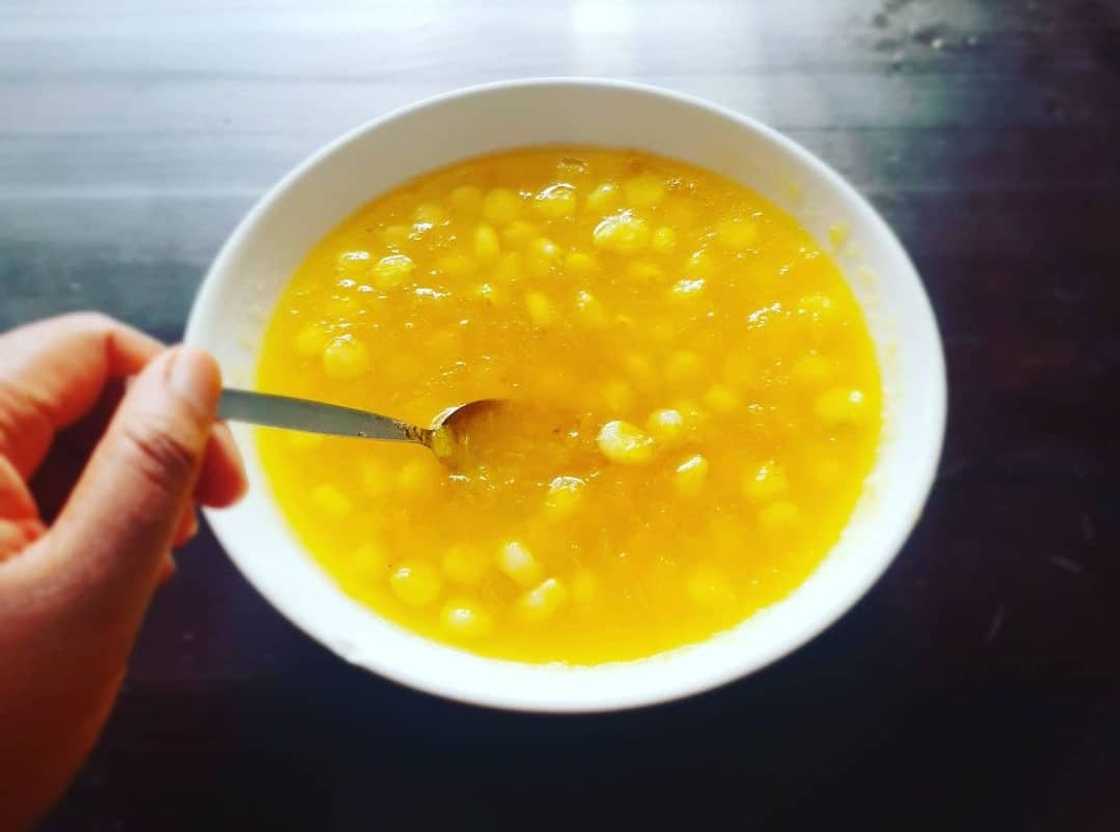
Source: Instagram
This traditional Ndebele food is known as Umxhanxa and is also native to the Kalanga people. It is a meal mostly served during the winter when harvested and consumed at lunch.
Ingredients
- Umumbu (maize or corn)
- Sugar
- iJodo (pig melon)
How to prepare
- Put your grains of maize or corn into a pot and then add water to boil for some time;
- Take it off the stove without adding salt;
- Slice the pig melon to make it easy to peel and remove seedlings;
- Dice the pig melon into cubes;
- Boil the melon by adding water and leave until everything becomes runny;
- Stir the mixture continuously afterwards;
- Add the boiled grains to the watery melon and add some sugar to taste;
- Your Umxhanxa is ready to be served.
9. Bota Une Doi
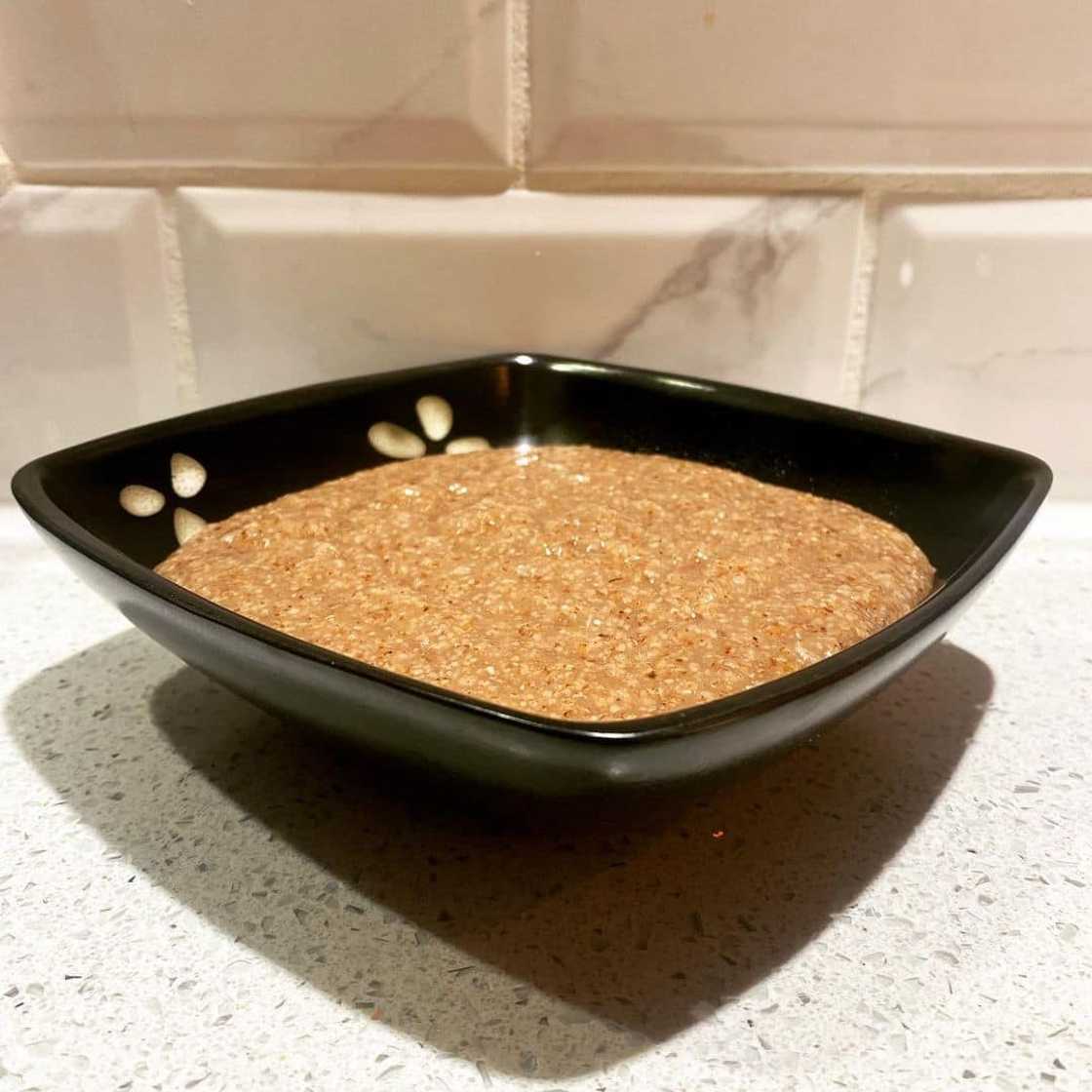
Source: Instagram
You can easily look up this delicacy when teaching with Ndebele traditional food pictures. It is mostly prepared for children but is also enjoyed by older people. You can give it distinct flavours by adding margarine, sugar, peanut butter and salt.
Ingredients
- Cornmeal
- Water
- Salt
- Unsweetened peanut butter
- Sugar (optional)
- Diced fruits and milk (optional)
How to prepare
- Add your cornmeal into a pot and introduce some cold water to mix;
- Mix until a cornmeal paste is formed;
- Introduce boiling water (dependent on the kind of cornmeal that is used) to the mixture and let it cook on fire for some time;
- Reduce the heat after boiling for a while and allow to simmer at low temperature for about 15 minutes. This will lead to the thickening of the mixture;
- Add some boiling water to adjust the thickness according to individual preference;
- Serve the porridge in a bowl and mix thoroughly with peanut butter;
- You may decide to add some sugar, milk and slices of your favourite fruits.
10. Peanut, maize and bean meal
Also known as the Mutakura, this is one local Ndebele food that will make you drool at a glance. It combines healthy foods such as maize, peanut, sweet beans, cowpeas and Bambara nuts. If it is made up of just maize and peanuts, the mixture is called Mangai.
Ingredients
- Shelled groundnuts
- Boiled and dried grains of corn or maize (Chibage chakafushwa)
- Salt
How to prepare
- Put the grains of corn or maize in a pot and leave to boil for about 40 minutes;
- Introduce the shelled groundnuts and salt;
- Add more water if necessary;
- Place the lid on the pot halfway and let it cook for about two hours while adding water at intervals where it is necessary;
- You can now set your Mutakura off the stove and serve it hot.
What is the Ndebele known for?
These people are known for their artistic nature and project this in their paintings, beadwork, home decoration and architecture, and the ornaments they have around them. They also love to adorn themselves with colourful clothes and ornaments.
What are the Ndebele customs?
One of the most noticeable customs of the Ndebele people is that they do not eat anything carnivorous or mostly what you will refer to as wild animals. They can be found in parts of South Africa, Zimbabwe and Botswana while upholding a patriarchal system that encourages polygamy.
What language does the Ndebele speak?
The Ndebele people speak isiNdebele even though they reportedly originated from the Nguni-speaking tribe in South Africa. The language is divided into Northern (Nrebele) and Southern Transvaal Ndebele dialects.
The folks from the north came from the BagaLanga and BagaSeleka tribes and got their culture by making a few changes to the customs and traditions of the Sotho community.
The type of Ndebele food you will enjoy depends on whether you are a vegetarian or a meat-eater. Nevertheless, whichever you are, there are several cultural foods to choose from and treat your taste buds.
READ ALSO: Top 30 high-demand products to sell from home in South Africa 2022
Briefly.co.za shared some high-demand products can consider selling if you want to make extra income from the comfort of your home.
The good thing is that with an internet-enabled device, you can create an online presence for your business and get patronage. So, check out the post to learn more.
New feature: check out news exactly for YOU ➡️ find "Recommended for you" block and enjoy!
Source: Briefly News

